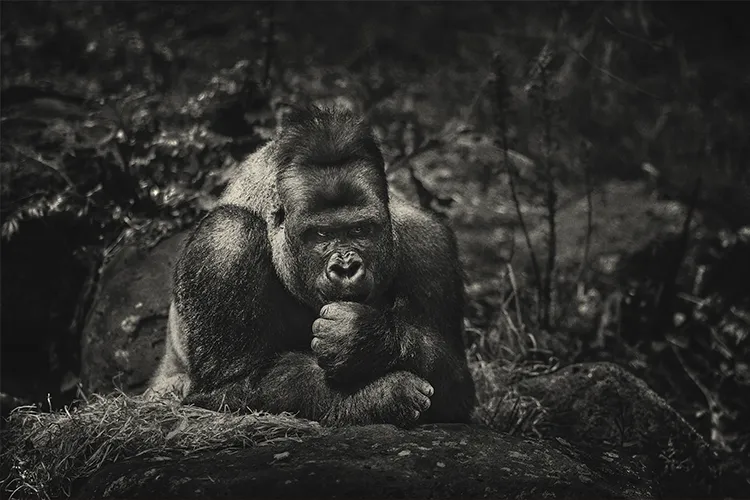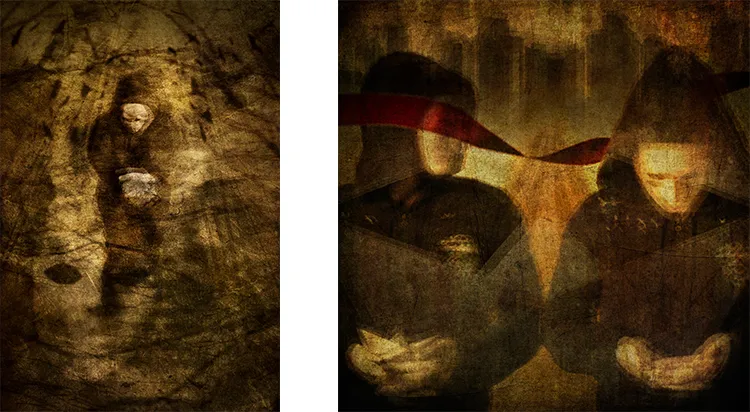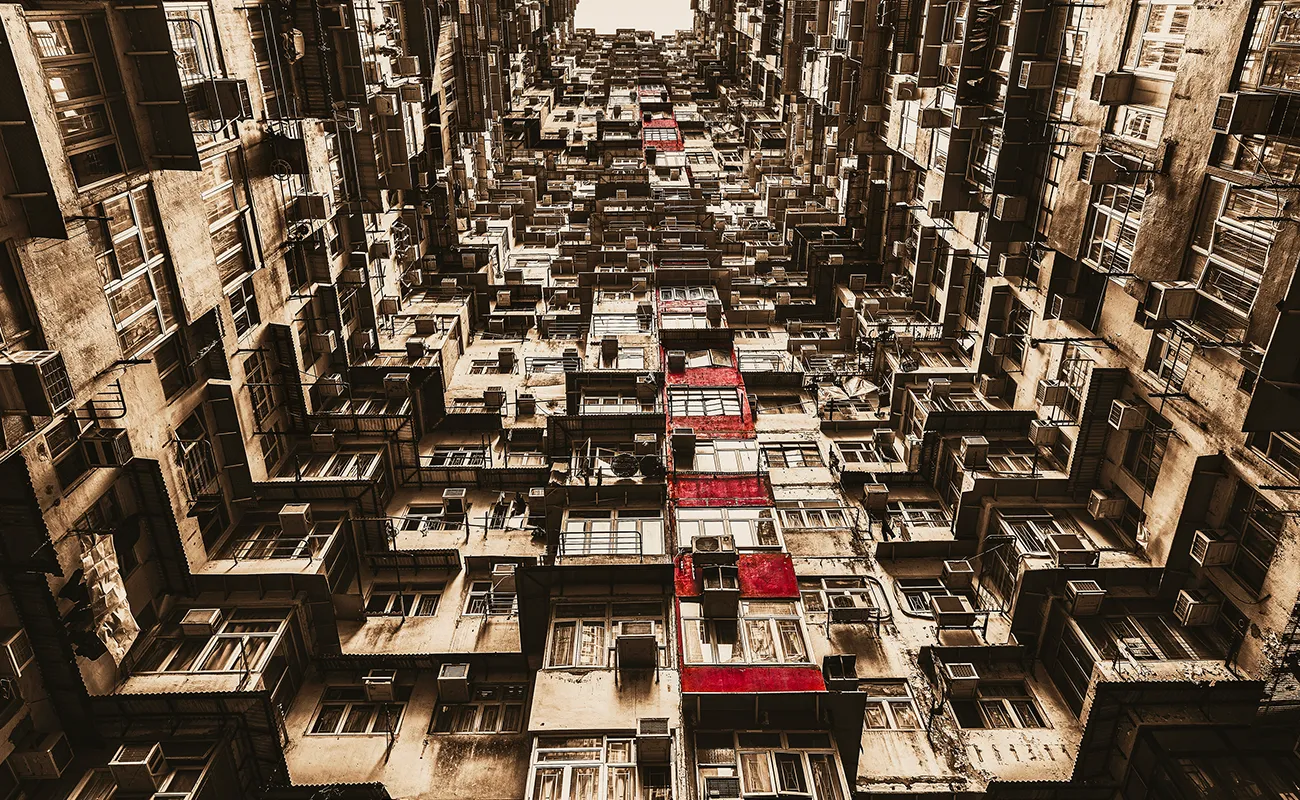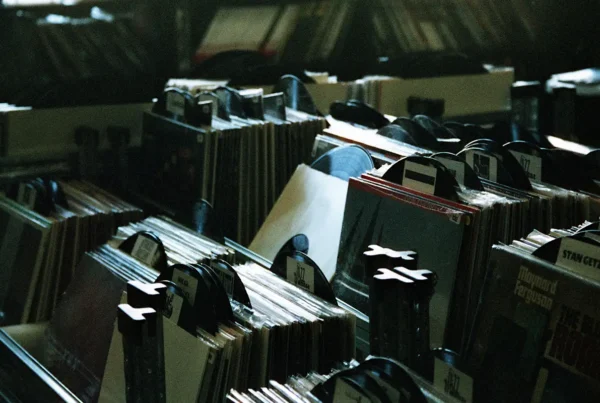“My art strongly focuses on the psychology of dark emotional states of mind and has been inspired by my own experiences, trauma, and processes of healing.”
From Wanderlust to Self-Discovery: The Evolution of a Visual Artist
Andrew Paranavitana, a Melbourne-based photographic artist, has always been drawn to the thrill of exploration. From his teenage years, travel became an integral part of his life, instilling a deep sense of curiosity and wanderlust. His extensive adventures, however, weren’t just about discovering new places; they ignited an internal journey that would later inform his artistic path. Alongside his travels, Paranavitana’s personal experiences, shaped by both light and dark moments from his childhood, fueled a fascination with the human mind. He became captivated by how life’s complexities and adversities mold the psyche, which drove him toward a process of self-reflection and personal growth.
It was through this ongoing process of healing that Paranavitana recognized how his artwork mirrored his journey. Photography became more than just a creative outlet; it evolved into a tool for introspection. Over time, he began to see a direct connection between his creative expression and his exploration of the self, with each piece acting as a reflection of his psychological and emotional landscape. Embracing this realization allowed him to merge two sides of his identity—the adventurous traveler and the introspective artist—into a unified vision.
The growth of his artistic voice came naturally, not as a result of a specific moment or decision. What started as a passion for photography gradually morphed into a deeper exploration of reality itself. His early forays into photo manipulation became a key turning point, as he sought to transform the reality he captured into something far more nuanced and expressive. This laid the foundation for the distinctive style he would become known for, one that blends elements of nostalgia with complex emotional undertones.

Andrew Paranavitana: The Art of Emotional Duality
Paranavitana’s art is deeply rooted in themes of emotional and psychological exploration, with a particular focus on the dualities of darkness and light. Drawing heavily from his own experiences with trauma and healing, his work often explores the contrasts between these two states, reflecting how they interact and coexist within the human condition. The dark, intense tones in his imagery are visual metaphors for the heavier emotional states he has navigated, while the lighter, warmer tones evoke moments of peace, safety, and nostalgia.
A unique feature of Paranavitana’s approach is how his emotional states influence the final form of his work. His darker pieces, laden with scratches, textures, and abstractions, often represent pain, adversity, and psychological struggle. Meanwhile, his lighter works are infused with a sense of calm and reminiscence, paying homage to the more serene moments of his past. These two contrasting veins of creativity, though starkly different, complement each other and serve as expressions of the same inner dialogue—the tension between past wounds and the ongoing process of healing.
His photographic process reflects this emotional dichotomy. While capturing images, Paranavitana allows his subconscious mind to guide him, often unaware of whether a crisp, clean photo will later transform into a dark, textured piece. His editing process, which involves intricate digital manipulation techniques, helps him convey the nuanced emotions that cannot be expressed through photography alone. This manipulation enables him to blur the lines between reality and abstraction, making his work a visual representation of the subconscious mind, where emotions often remain hidden or unresolved.

Textures of the Mind: Artistic Inspirations and Influences
Paranavitana’s work is shaped by a diverse range of influences that extend beyond the realm of photography. He draws inspiration from music, film, literature, and psychology, all of which play a significant role in shaping his creative process. Music, in particular, is a powerful source of inspiration, with artists like Massive Attack and SAULT influencing his exploration of darker emotions and themes of self-awareness, freedom, and resilience. Their music’s ability to address complex emotions without being superficial mirrors Paranavitana’s own approach to visual storytelling.
Film directors like David Lynch and Guillermo Del Toro have also left an indelible mark on his artistic style, particularly in terms of surrealism, set design, and toning. Their works, often characterized by their ability to evoke unsettling emotions, resonate with Paranavitana’s interest in the darker corners of the psyche. Literary influences such as Edgar Allan Poe, with his exploration of themes like grief and guilt, and Carl Jung’s psychological theories, particularly the concept of the Shadow Self, have further deepened Paranavitana’s fascination with the human mind.
Jung’s ideas, especially his exploration of the unconscious, have been pivotal in shaping Paranavitana’s series Darkened Introspection. This body of work delves into the tension between the Persona and the Shadow Self, exploring how these facets of identity struggle to find balance. The intricate textures and cracks seen in his photographs serve as visual representations of the pain that results from keeping parts of the self hidden from the world. In many ways, Paranavitana’s work can be seen as a continuous exploration of the emotional and psychological impact of these internal conflicts.

Andrew Paranavitana: A Creative Path to Healing
For Paranavitana, the artistic process itself is a deeply therapeutic experience, one that fosters both creativity and healing in an ongoing cycle. His photography serves as a medium for expressing emotions that may otherwise remain suppressed. The digital manipulation techniques he employs, such as adding textures and enhancing shadows, allow him to imbue his work with a depth that mirrors the subconscious mind. These visual elements, such as scratches and cracks, often symbolize the emotional scars left by trauma, while older landscapes and structures reflect his darker past.
His workspace, much like his creative process, is fluid and ever-changing. When he’s shooting, his environment constantly shifts, often taking him to different countries where new experiences fuel his artistic inspiration. The editing phase, however, is more introspective and contemplative. Music frequently accompanies this stage, often triggering creative bursts that drive his vision forward. Paranavitana approaches distractions not as hindrances but as part of the process, allowing inspiration to flow from unexpected sources.
In his upcoming project, a sequel to Darkened Introspection, Paranavitana plans to further explore Jung’s concept of the Shadow Self. This new series will delve into the consequences of ignoring one’s darker side and how this affects not only the individual but also those around them. By traveling the world to gather props and settings, he envisions a comprehensive series that brings together all of his skills and artistic themes into a cohesive body of work. This ambitious project reflects Paranavitana’s dedication to both his craft and his personal journey of healing and self-understanding, as he continues to navigate the intricate landscapes of the human psyche through his art.






